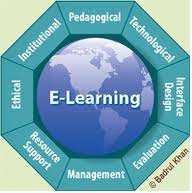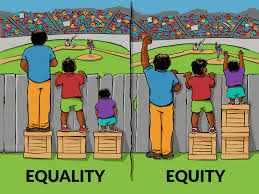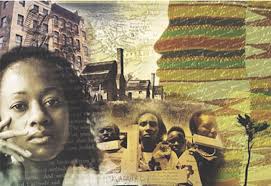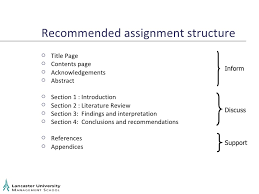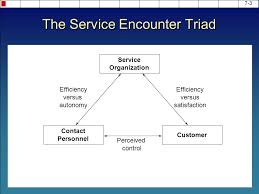Designing and Developing an eLearning Course Order Instructions: Assignment: Designing and Developing an e-Learning Course – Part 2
Click here to access the CourseSites Tutorial Series.
Go to the Course sites Website and go through the tutorials to help familiarize yourself with Blackboard.

Additional links and tutorials may be available in the course shell. You will use this Website to create your course. https://www.coursesites.com/webapps/Bb-sites-course-creation-BBLEARN/pages/getstarted.html
Scenario: In this assignment, you are required to design, develop, and implement a mini-online, six (6) week course, using the Course Management System (CMS), Blackboard. Write a four to six (4-6) page paper in which you:
Part A Course Content – Described
Revise Assignment 3 based on feedback from your professor.
Name the course and provide an ID.
Provide a course description with three (3) goals and a welcoming announcement.
List one (1) or two (2) required instructional materials for the course and at least three (3) supplemental materials (in APA format), providing a rationale for each.
List three to five (3-5) learning outcomes for the first three (3) weeks of instruction.
Recommend three to four (3-4) instructional strategies to be used in the course, providing a rationale for each.
Design a weekly schedule for these first three (3) weeks that includes: (a) Topic(s) and (b) learning outcomes that are aligned with the topics.
Include in the weekly schedule (a) two (2) discussion questions for each of the three (3) weeks and (b) required activities.
List two (2) assignments: (a) a five (5) -question quiz and (b) a writing assignment.
Your written assignment must follow these formatting requirements:
Be typed, double-spaced, using Times New Roman font (size 12), with one-inch margins on all sides; citations and references must follow APA. Check with your professor for any additional instructions.
Include a cover page containing the title of the assignment, the student’s name, the professor’s name, the course title, and the date. The cover page and the reference page are not included in the required assignment page length.
Part B Blackboard Shell – Developed
Directions:
Go to coursesites.com.
Click on the Sign-Up link (top right corner) and choose the option “As Instructor.”
Complete the Sign Up process.
Choose to Create New Course.
Name the course (e.g., John Smith_Introduction to Social Science).
Provide Course ID (e.g., JohnSmith_ISS100).
Provide a course description with three (3) goals.
Directions:
In the Enrollment Options, select the option “Instructor-Controlled”
Click on the link “Save and Continue” link (green color)
Skip Invite Students. Click on Customize Course link (green color)
Provide a welcoming announcement on the Home Page in the course site you just created by clicking on the “more announcements” link at the bottom of box titled “My Announcement.”
Build three (3) content areas using the Content area in the main menu on the left side of the screen: (hover mouse over “+” > click on Content Area), naming the content areas: Week1 Content, Week 2 Content and Week 3 Content (Make sure you check the box “Available to users.”) .
Create one item in each content area that has an attached three to four (3-4) completed PowerPoints slides pertaining to the content of your mini-course.
Designing and Developing an eLearning Course Directions
Go to the Information link (Left Course Menu) and create the required course elements listed next:
List the one or two (1 or 2) required instructional materials and at least three (3) supplemental materials. Name this item “Instructional and Supplemental Materials.”
List three to five (3-5) learning outcomes for the first three (3) weeks of instruction. Name this item “Learning Outcomes: Weeks 1-3.”
Build a weekly schedule for these three (3) weeks that includes: (a) topic(s) and (b) learning outcomes that are aligned with these topics. Name this item “Weekly Schedule: Weeks 1-3.”
Directions:
Go to the Discussions area in the left course Menu.
Create a Forum in the Discussions area and name it Week 1-3 Discussion.
Post two (2) discussion questions by creating a new thread for each question.
Directions:
Create another Content Area (hover mouse over “+” > click on Content Area) in the Left Course Menu and name it Assessments (Make sure you check the box “ Available to users.”). Then use the Assessments drop-down menu to create a quiz by choosing Test and a writing assignment by choosing Assignment.
Create: (a) a five (5) question quiz and (b) a writing assignment in the Assessments link
Designing and Developing an eLearning Course Sample Answer
Designing and Developing an e-Learning Course: Public Speaking and Business Communication Skills _ PSC201
Course Description
This course is an online course in Public Speaking and Business Communication Skills. The course offers an introduction to effective communication with an emphasis on public speaking. Public speaking and business communication are essential skills required to succeed in professional and social life. Effective communication skills enable one to create powerful messages and communicate them in a manner that is appropriate to their audience. Acquiring business presentation competencies enables professionals to create and make simple, clear and compelling presentations, and to deliver them effectively formal audiences in any situation.
The goals of this course are to teach voice and body language, content and structure audience engagement and quality of execution in making public speeches and formal presentations. Voice and body language will teach skills in vocal projection, pace, breathing, stance, posture, gesture, and movement. Content and structure will teach students how to make preparations, an organization of content, narrative and framing messages, and using visual aids in presentations. Audience engagement will teach how to connect and interact with the audience, how to secure and maintain their attention, how to earn their interest and respect, and how to manage questions and discussions. Quality of execution will teach students how to effectively deliver presentations with confidence, authority, and intended impact.
Public speaking instills fear in many individuals and thus can be daunting, but confidence and competence in communicating with audiences can indeed be learned and practiced to perfection. Students are welcome to take this stimulating and inspirational short course in public speaking. In the eight week duration of the course, students will build presence, confidence, and authority necessary to captivate an audience and make effective public presentations.
Designing and Developing an eLearning Course Instructional Materials
Required materials
Books:
Lucas (2015). Art of Public Speaking (12th Ed.). McGraw Hill
O’Hair, D., Stewart, R. and Rubenstein, H. (2007). Speaker’s Guidebook: Text and
Reference (3rd Ed.). New York: Bedford/St. Martin’s
This textbook gives detailed guidelines on how to develop written speeches and business presentations. The textbook
resources provide
Supplemental materials
Nikitina, Arina (2011). Successful Public Speaking.
This e-book explains the foundational aspects of persuasion for public speaking. The e-book is useful for learning how to make convincing persuasion informal situations
Videos:
Harrington, Andy (2013). Video: Public Speaking Tutorial . Accessed from https://www.youtube.com/watch?v=Vzf7z-VfSbs
This video presentation presents tips about being a successful public speaker. The video explains the steps of preparing a great speech and explains certain essentials relating to confidence for a good public speaker. The video presentation is relevant for the course in visually explaining to students the practical aspects of public speaking.
Designing and Developing an eLearning Course Learning Outcomes
In the first three weeks of this course, students will learn how to:
- Plan, prepare and structure presentations effectively
- Manage nerves and exude confidence
- Establish rapport and engage an audience
- Deliver speeches professionally with formal style and intended impact, and
- Design and make powerful, compelling visual aids for use in public presentations.
Instructional Strategies
In teaching effective public speaking skills, the course will use video replay alongside lecture notes to provide constructive and practical personal coaching that instructs on key learning points. Materials used will deepen the student’s knowledge on best practices and what works in public communication.
The course will seek to empower the student in interpersonal skills using role-play and structured practical exercises in vocal communication and presentation, breathing exercises and body language. This will enable students to learn by doing in teaching students to enhance their stage presence.
The instruction will require students to complete multiple choice and writing tests, and make brief Power-point presentations on their own subject of knowledge and interest. This will evaluate students on their level of competence in writing and speaking, and performance.
Weekly Schedule
Week One: In the first week, students will learn the basics of public communication and writing speeches and the qualities of effective speakers.
Topic 1: Public Communication and Writing Speeches
The learning outcomes for this module are
- Reading and writing formal speeches and presentations using correct grammar, punctuation, and spelling
- Expressing oneself accurately, clearly, vividly, and appropriately following a critical line of thought
- Organizing and supporting a persuasive argument
Topic 2: Proper Preparation, Planning, and structuring
- Selecting, narrowing and focusing on topics for speech and presentation
- Researching material to generate speeches and presentations
- Adapting the speech to the specific audience being addressed
- Supporting ideas with concrete evidence and sound reasoning
- Organizing the message for effective communication
- Generating speaking and presentation notes from a full speech manuscript
Designing and Developing an eLearning Course Discussion questions
- Explain five guidelines for effective informative discourse in researching information for use in public speaking
- What are the key points to remember in developing, interpreting and expressing ideas through effective oral and visual communication in public
Required Activities:
Gather, evaluate, analyze and synthesize information relevant to a particularly controversial question or issue in society. Write a short five-minute
speech in which you develop and demonstrate a logical position in the form of a perspective, thesis or hypothesis that acknowledges the ambiguities or contradictions that emerge from the question or issue.
Week Two: In the second week, students will learn basic oral communication skills necessary for functioning effectively in public social settings and in front of an audience
Topic 3: Managing Nerves and Building Confidence
- Speech anxiety and how to deal with it
- Effective speech and delivery techniques
- Principles of vocal projection, pace, breathing and improving your speaking voice for effective speech delivery
- The oral communication process and the importance of the speaker-audience situation
- Overcoming potential obstacles in the speaking situation
- Generating audience interest and involvement
- Basic strategies for effective communication and participation in public settings
Topic Four: Verbal and Non-Verbal Communication
- Styles of speech delivery using notes, memorized the speech and reading from a text
- Determining the best style of delivery suited to skills and level of experience
- Etiquette, body language and portraying an appropriate image on public occasions
- Nonverbal principles of effective speech delivery stance, posture, gesture and movement
- How the self-concept influences the intrapersonal and public levels of speech communication
- Development of the self-image in public speaking
Discussion questions:
- What are the verbal cues that can be used by an audience to interpret the ideas, competence, and validity of a public speaker
- What are some of the body postures and gestures that a public speaker can use in communicating ideas and enhancing the effectiveness of oral communication
Required Activities:
List and explain at least five aspects of etiquette that a public speaker must be aware of when delivering a speech to a formal audience or business meeting.
Week Three: Best Practices for Developing and Delivering Speeches and Presentations
Topic 5: PowerPoint Presentation and Audio-Visual Excellence
- Using visual aids to reinforce and clarify the verbal message
- Critically and creatively analyzing materials obtained from print and electronic sources
- Information acquisition through interviewing, library research
- Creating a research bibliography and taking research notes efficiently
- Distinguishing main points from minor points in the oral and written discourse
Topic 6: Audience Engagement in Delivering Speeches and Making Presentations
- Assessing the credibility and the reliability of claims in sources and supporting materials
- Judging the soundness of evidence for use in public speech and formal presentations
- Assessing the validity of reasoning used in public discourse
- Listening for the main points and supporting materials of a speaker’s message
- Focusing on a speaker’s ideas rather than the style used in delivering the speech
- Maximizing leadership skills for use in formal speaking situations
- Persuasion, audience analysis, and credibility
Discussion Questions:
- What are the basic issues relating to audience needs, presentation planning and practicality of reasoning encountered in developing and delivering policy speeches
- What methods can be employed in delivering a persuasive presentation to a formal audience
Required Activities:
Create a nine-minute persuasive Powerpoint presentation in which you persuade the audience to support or reject a specific question of policy. In writing the speech, you will seek either agreement or immediate refusal of the policy from the audience.
Designing and Developing an eLearning Course Assignments
- Quiz:
- Explain the communication process as it occurs in a specific context
- Identify elements of ethical speaking
- Identify levels of listening and ways to improve listening skills
- Analyze an audience and relate a speech topic to that audience
- Write an appropriate goal and thesis for a speech
(b) Writing Assignment:
Write a seven-minute speech that informs the audience about a particular object, concept, process, or event that is relevant and affects society.
Designing and Developing an eLearning Course References
Anderson, L. E., & Bolt, S. B. (2013). Professionalism: Skills for workplace success (3rd ed.). Upper Saddle River, NJ: Prentice Hall.
Baccarani, Claudio & Bonfanti, Angelo (2015). “Effective public speaking – a conceptual framework in the corporate-communication field”, Corporate Communications, 20(3), 375-390. Accessed from http://search.proquest.com/openview/774d9f722a013978aba5f56758d72030/1.pdf?pq-origsite=gscholar&cbl=25916
Claudia, Ann-Marie W. (2015). “Soft skills perceived by students and employers as relevant employability skills”, Walden Dissertations and Doctoral Studies. Walden University.
Guffey, Mary E. & Loewy, Dana (2010). Business Communication – Process and Product. South-Western Cengage Learning
Guffey, Mary Ellen & Loewy, Dana (2012). Essentials of Business Communication (9th Ed.). South-Western College Pub.
Rattenborg, A. N., Simonds, C. J., & Hunt, S. K. (2010). Public speaking: Prepare, present, participate (1st ed.). Boston, MA: Allyn & Bacon.
Wood, J. T. (2012). Communication in our lives(6th ed.). Wadsworth, Cengage Learning.





